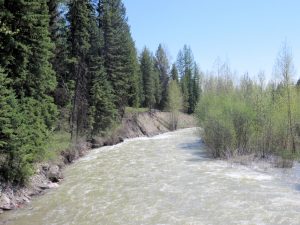
This is handy. So handy, in fact, that we’ve added it to the site’s “Flood Information” page.
The National Weather Service office in Missoula constructed a sort of one-stop information page for all Northern Rockies flood-related information. Here’s the official write-up . . .
This past winter the Northern Rockies experienced significant snowfall with many mountain observations hitting record values. This snow has been steadily melting this past May and will continue into June producing flooding conditions throughout the Northern Rockies. This web page was developed to pull all hydrology products into one location. Click on the tabs… to observe the river and stream gauges within each county that is serviced by the National Weather Service in Missoula, Montana.